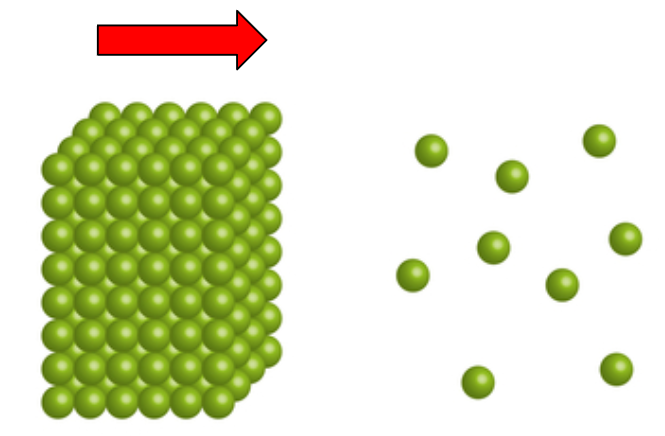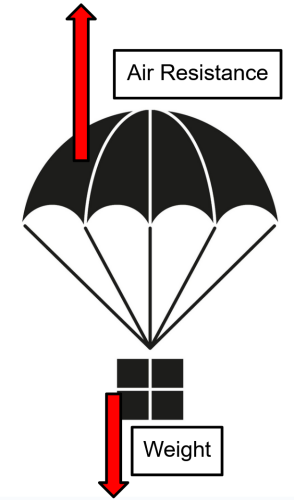Do you know why parachutes can slow down a falling object?

Parachutes increase the air resistance of a falling person or object. Let's learn about air resistance as a force, and how it works!
Air resistance, also known as drag, is a force that opposes the motion of an object when it moves through the air. This opposing force can slow an object down.
What causes air resistance?
Imagine a solid, moving through a gas. We can represent the particles in a diagram like the one above.
As the solid moves through the gas, it has to push the gas particles out of the way, in order to get through. This is what produces the drag force. This drag force slows the object down.
Air resistance is a type of friction. Let's remind ourselves - what is friction?
.jpg)
If you rub your hands together, they warm up. This is caused by the force of friction. Friction happens when two surfaces interact. Hands aren't perfectly smooth, and when those surfaces move and bump over each other, the force of friction is caused. Friction opposes motion.
Air resistance, just like friction, is a contact force. That's because air resistance is a result of contact between a solid and the air particles in the way of that solid.
There are lots of examples of air resistance, including the parachute from the start of this activity.

When a person is skydiving, they are falling quickly through the atmosphere. The jumper experiences a small amount of air resistance as they fall because their body is colliding with air particles in the atmosphere.
When they open the parachute, this air resistance increases. The large parachute is designed to 'catch' as much air as possible. The air resistance opposes the motion of the jumper, slowing them down significantly.
The size of the force of air resistance depends on two important variables
1. The greater the surface area of the object, the greater the air resistance. A large surface area means that more force is needed to push past the greater number of air particles in the way.
2. The greater the speed of an object, the greater the air resistance. The faster an object moves, the more air it has to push out of the way per second.
Now that we understand the concept of air resistance, let's try some practice questions!










